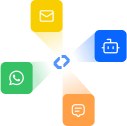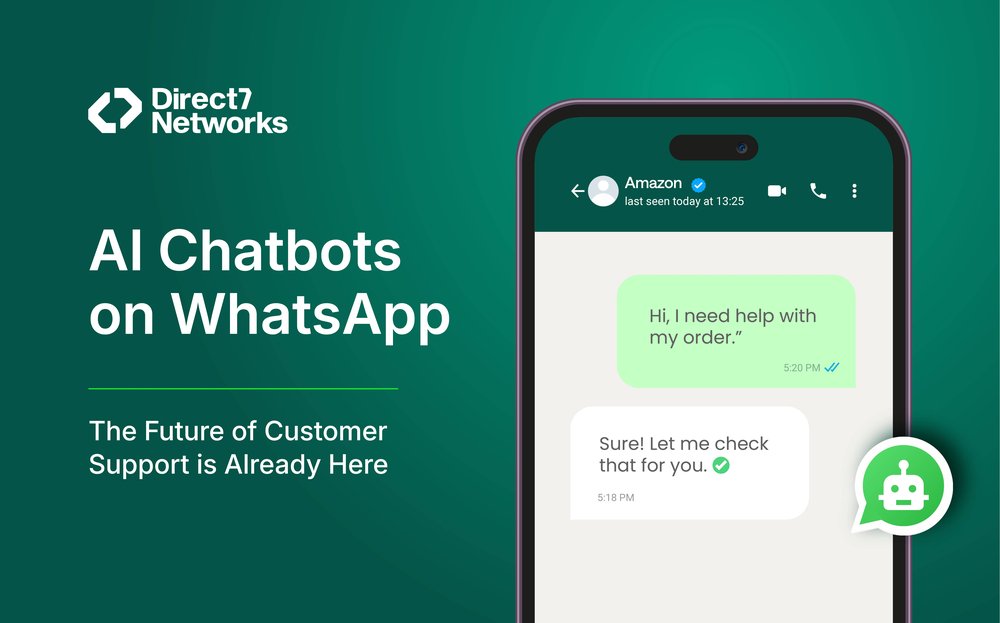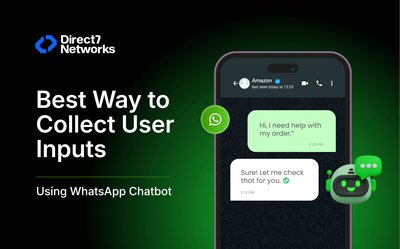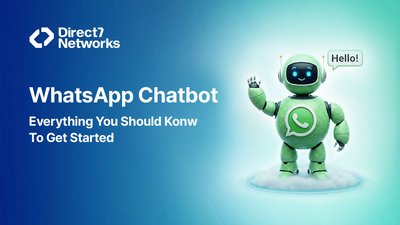WhatsApp has quietly evolved into one of the most powerful customer communication platforms in the world. What began as a simple messaging app is now a critical service channel for businesses that want to provide support that’s fast, personal, and always available.
At the center of this transformation are AI-powered chatbots and intelligent systems that can understand natural language, hold smooth conversations, and collaborate seamlessly with human agents.
The New Wave of Customer Support
From Scripts to Conversations
Traditional chatbots were rigid. They relied on decision trees and keyword matching if a customer’s message didn’t fit the predefined script, the conversation collapsed.
AI chatbots on WhatsApp are fundamentally different.
- Powered by Large Language Models (LLMs), they can:
- Understand user intent, not just keywords.
- Maintain context across multiple turns.
- Respond in natural, human-like language.
Why WhatsApp Is the Perfect Fit
WhatsApp’s native features — buttons, quick replies, and rich media — make it ideal for conversational AI. Together, they allow for:
- Faster resolutions.
- More intuitive user journeys.
- Rich, interactive communication experiences.
- Customers can now:
Get order updates.
Confirm appointments instantly.
Find product details or FAQs.
Even complete purchases — all within a short, chat-based flow.
Customer interactions on WhatsApp become faster, smoother, and more human — without the wait times of traditional support channels.
How It Actually Works
Modern AI chatbots combine Natural Language Understanding (NLU) with a technique called Retrieval-Based Generation (RAG).
In Simple Terms
Instead of “guessing” an answer, the chatbot:
- Searches for a verified source (e.g., help center, product catalog, or knowledge base).
- Retrieves the relevant content.
- Generates a short, accurate response using that information.
When integrated with business systems like:
- CRMs
- Order tracking APIs
- Appointment booking tools…the chatbot can provide real-time, precise answers, such as:
“Your order is out for delivery.”
“Your appointment is confirmed for 3:00 PM.”
This blend of intelligence + data access makes the chat experience both smart and reliable, the foundation of modern customer support.
Where Businesses See the Most Impact
AI chatbots on WhatsApp are delivering tangible, measurable value across five major areas of customer engagement.
1. Order and Delivery Updates
- Impact: Real-time tracking and notifications significantly reduce “Where is my order?” inquiries.
- Outcome: Fewer inbound calls, smoother delivery communication, and higher customer satisfaction.
2. Appointment Management
- Impact: Automated confirmations, reminders, and rescheduling options cut no-shows dramatically.
- Outcome: Better utilization of staff and time, especially in service-heavy industries like healthcare, salons, or logistics.
3. Pre-Sales Support
- Impact: Chatbots can:
- Answer FAQs.
- Share product catalogs.
- Capture lead details before routing them to sales reps.
- Outcome: Leads are warmer and more qualified, saving sales teams time and improving conversion rates.
4. Customer Service FAQs
- Impact: Common queries, returns, refunds, and password resets are handled instantly.
- Outcome: Customers get answers 24/7, while support agents can focus on complex issues.
5. Proactive Engagement
- Impact: Businesses can send:
- Cart recovery messages.
- Subscription or renewal alerts.
- Loyalty reminders and offers.
- Outcome: Increased retention and repeat purchases without manual outreach.
Common Thread:
All these use cases share one simple advantage — they reduce waiting time, save human effort, and make customers feel cared for immediately.
The Hybrid Model: When AI and Humans Work Together
Even the most advanced AI chatbot can’t handle every situation. That’s why the most effective WhatsApp deployments use a hybrid model that blends automation with human empathy.
How the Hybrid Model Works
- AI handles the groundwork — routine questions, updates, and structured workflows.
- Automatic handoff triggers when the bot detects:
- Confusion or frustration.
- Complex or high-stakes queries.
3. Smooth transition to a human agent, who receives:
Why It Works
- Customers avoid repeating themselves.
- Agents can resolve faster with full context.
- Businesses combine AI efficiency with human assurance—the best of both worlds.
Summary: WhatsApp chatbots drive results where speed and personalization matter most. But their real power emerges when AI and human teams work together, ensuring every customer feels heard and helped.
Why WhatsApp Is the Perfect Channel for AI Support
WhatsApp’s power lies not just in its scale, but in its familiarity and frictionless experience.
From the Customer’s Perspective
- Personal and Immediate: Messages arrive where people already spend their time.
- No extra apps or downloads: Unlike web chat widgets, WhatsApp is always “on.”
- Natural format: Short, conversational, and visual messages fit seamlessly into daily communication habits.
From the Business Perspective
- Deep integrations: WhatsApp’s API connects directly with CRMs, order systems, and ticketing tools.
- Interactive design: Supports buttons, quick replies, media, and rich templates.
- Unified experience: Enables both AI-driven automation and human handoff within a single, continuous conversation.
Result: WhatsApp delivers speed, personalization, and convenience — the perfect mix for AI-powered customer engagement.
How to Get Started
If your business is new to AI chat on WhatsApp, begin with a simple, focused pilot. The goal is to prove value early without overengineering the setup.
- Choose One Clear Use Case
– Start with a single, high-value workflow (e.g., order tracking, appointment confirmations). - Create Short, Natural Templates
– Write conversational, human-like WhatsApp messages aligned with your brand tone. - Integrate with Core Systems via D7 WhatsApp Chatbot
– Set up your chatbot in the D7 Dashboard.
– Design chat flows using the drawable interface.
– Link it to your WhatsApp Business number.
– Connect it with CRM or order systems for real-time data. - Enable Human Handoff
– Add escalation paths to transfer chats to live agents when needed. - Measure Early Success
– Track resolution rate, CSAT, and response time using D7 analytics. - Expand Gradually
– After a successful pilot, scale to lead qualification, re-engagement, and multilingual support.
The Real Value: Faster Help, Happier Customers
AI chatbots on WhatsApp aren’t built to replace people — they’re designed to empower them.
What That Means in Practice
- Customers receive instant answers 24/7.
- Agents spend less time on repetitive tasks.
- Businesses save operational costs while improving satisfaction.
When executed well, this hybrid model delivers support that feels effortless, personal, and scalable — exactly what modern customers expect.
Final Takeaway
WhatsApp AI chatbots are transforming customer support from a cost center into a competitive advantage. They unite automation, real-time data, and human empathy inside a single, familiar conversation thread.
The Results Speak for Themselves: Faster resolutions, Higher satisfaction, A brand that feels present and trustworthy
All inside the app your customers already use and trust daily. Start small. Ground your bot in real data. Keep humans in the loop.
Do that—and your WhatsApp chatbot becomes not just a tool, but a cornerstone of modern, intelligent customer experience







